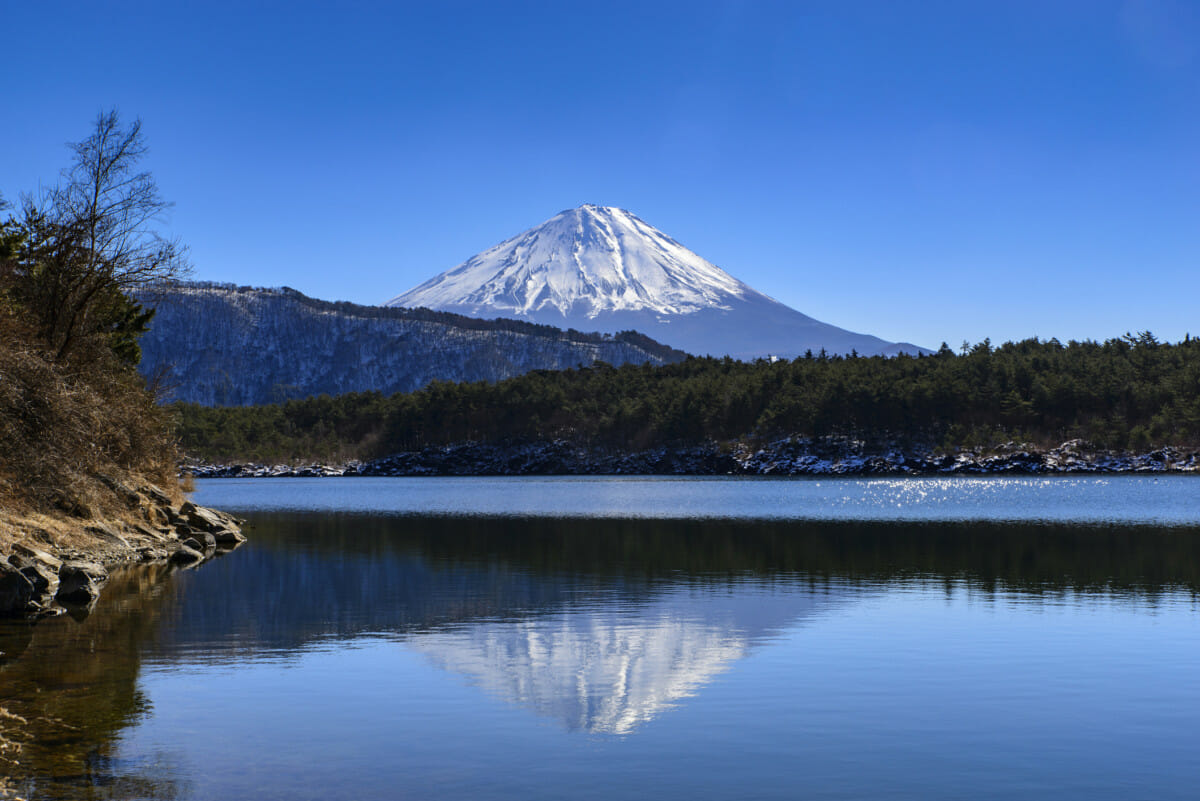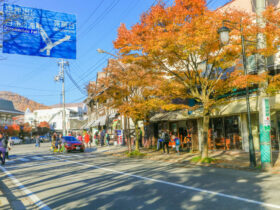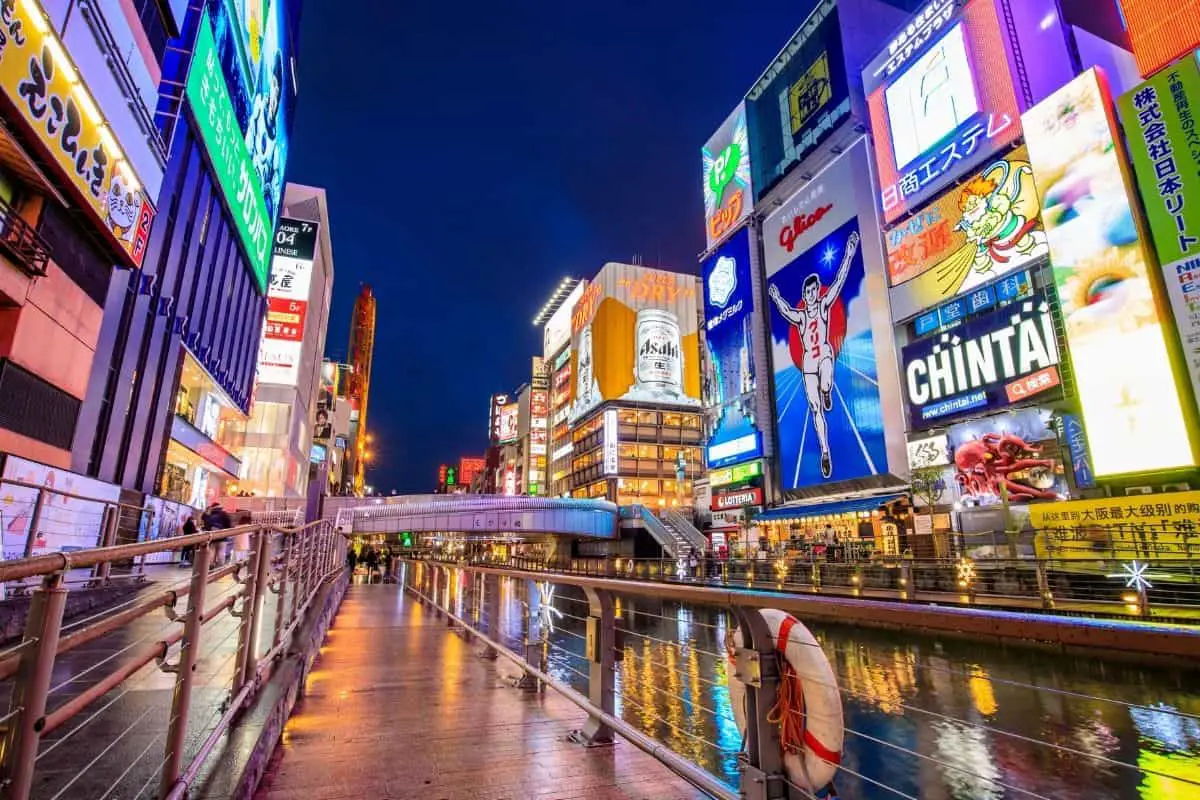While Mount Fuji is known to be a sacred mountain in Japan, it can be hard to remember that Mount Fuji is also a volcano.
While volcanoes can cause massive devastation, eruptions for this large mountain have resulted in the picturesque Fuji Five Lakes area.

The Fuji Five Lakes
The namesake of this area comes from five lakes having been formed from various volcanic eruptions from Mount Fuji.
The Five Lakes area can be found in Yamanashi Prefecture, and the lakes sit around the bottom of the mountain. There are now thousands of people who live in small cities that surround these lakes.

The lakes have been in place for centuries, eventually filling with water and adding to the spectacular beauty of the areas around Mount Fuji.
Thousands of tourists flock to any and all of the lakes when traveling to Japan, as each offers its own unique experience.
As you make your way around the Fuji Five Lakes, there are sites such as museums, shrines, pagodas, and more that offer a combination of things to learn, things to explore, and so much more.
Lake Saiko
While Lake Saiko doesn’t have much tourism built around it, its untouched beauty is still worth exploring. One can find this lake close to Lake Kawaguchi, and interestingly enough, Lake Saiko also borders the Aokigahara Forest on one end.

On a clear day, the vantage point from the western region of Lake Saiko offers some gorgeous views of Mount Fuji.
If you want to enjoy a more laid-back, naturally inclined experience when visiting Fuji Five Lakes, you’d be happy to know that there are a plethora of spots around this particular lake to set up camp. There are also opportunities to enjoy the water through canoeing, boating, or fishing.
Lake Shoji
Lake Shoji is the smallest of the lakes, but that doesn’t mean it’s not worth visiting. This popular fishing spot is known to have lava shoot out of it every now and then.
Lake Shoji used to be a part of one big lake alongside Lake Sai and Lake Motosuko until a volcanic eruption, courtesy of Mount Fuji, created three lakes out of one.

As with many of the other lakes, visitors can simply take in the surrounding nature, get in the water on a boat or jet ski, or stay for a couple of days in one of the nearby hotels.
Lake Kawaguchi
Lake Kawaguchi is a fairly famous lake and is a fantastic place to stay for a few days when exploring the mountain and surrounding areas. There are plenty of hotels to choose from, and activities and festivals are celebrated on the small adjoining island every year.

Lake Kawaguchi Via Tripadvisor
There’s also the opportunity to take a boat ride around the lake, getting a one-of-a-kind perspective on the mountain and the nature around it.
There are also hot spring baths to soak in before taking in some of the sites near the lake, including a museum or a ropeway to one of the nearby mountains.
Lake Kawaguchi Ropeway Official Website
Lake Yamanaka
The largest of all the lakes that make up the Fuji Five Lakes, this body of water sits high up as well. There are spots around the lake where you can find ample places to stay and things to do.
Lake Yamanaka also offers some vantage points to see Mount Fuji on a clear day, including the Panorama Dai.

If you choose to stay around Lake Yamanaka, you have the option to camp or book a room at either a hotel or a bed and breakfast, called a minshuku in Japanese.
You can also easily enjoy a day at the lake, with nearby restaurants to stop at and hot spring baths to soak in when you need to relax.
Lake Motosu
Lake Motosu is a very deep lake that can be found near Mount Fuji. It is said that it was formed because a large flow of lava erupted through the space now known as the Aokigahara Forest, eventually coming to form Lake Motosu.

Lake Motosu allows for some camping, as it hasn’t been developed like some of the other lakes.
The area can be explored on foot by those who enjoy hiking, and the water is suitable for a variety of activities such as fishing or boating.
Lake Motosu Camping Via Tripadvisor
Visiting The Fuji Five Lakes
Many tourists will come to the Fuji Five Lakes area to immerse themselves in all of the naturally occurring beauty of the land and lakes.
There are some excellent spots to hike, climb, and walk around for avid adventurers and beginners alike. If you’re hoping to catch a glimpse of Mount Fuji, it’s often easiest to see at sunrise on a clear day.

There are various bus lines in place around the Fuji Five Lakes area that allow you to see much more of the area than you would on foot.
Hoto Noodles
No matter where you choose to visit in the Fuji Five Lakes area, seeking out some of Yamanashi Prefecture’s famous hoto noodles is a must.
This local specialty contains noodles served in a hot miso broth and is the perfect way to get nourishment after a day full of sightseeing and exploring.

Various restaurants in the prefecture offer their own renditions of hoto noodles, and some ryokans will also offer them to their guests. The noodles are thicker than udon noodles and are made with wheat, offering a hearty meal that is savory and delicious.
Fuji-Q Highland
One might be surprised to learn that there is actually an amusement park close to Mount Fuji.
Fuji-Q Highland has been in Fujiyoshida in Yamanashi since the 1960s and features themed rides, roller coasters, and two haunted amusement park attractions.
It’s a great place to take kids, though people of all ages can enjoy this fantastic amusement park.
Fuji Q Highland Amusement Park Via Tripadvisor

Sengen Shrine
The Sengen Shrine is one of the grandest shrines in Japan and is one of the biggest draws into the area of Mount Fuji and the Fuji Five Lakes. The shrine is located very close to the base of Mount Fuji, so it’s not very far from the lakes.

When you approach the shrine, you follow a long path that leads to the brilliant red buildings of the shrine, including the elaborate main hall, and continue to a forested area that leads to the main shrine.
The shrine itself is one of many that honors Mount Fuji and Princess Konohanasakuya, who is the Shinto deity that protects Mount Fuji.
Onsens In The Mount Fuji Area
Visiting an onsen or two is a must when in Japan, no matter where you are, but Fuji Five Lakes offers a unique opportunity to enjoy spectacular views while soaking in a hot spring bath.
Regardless of which lake you’re around, you can find both outdoor and indoor onsens.

Some of the ryokans, or inns, in the Fuji Five Lakes area where you can enjoy accommodations will also have some public or private onsen baths to soak in.
Be sure that if you’re not staying at a ryokan but want to use one of their hot spring baths, call ahead to ensure they allow day visitors.
Staying In the Fuji Five Lakes Area
There’s no need to rush to see all five lakes in a day, as there are multiple spots to stay overnight surrounding the lakes as well as a short distance from the lakes.

You can choose from what kind of stay you might like to have, as there are places to set up tents and camps, hotels, small inns, and bed and breakfasts.
Best Camping Near Mount Fuji Via Tripadvisor
The Significance Of Mount Fuji To Japan
Mount Fuji has been one of the most important areas for Japan, as well as for those who practice Buddhism and the Shinto faith, for centuries. It is considered one of the Three Holy Mountains and is a protected heritage site.
There are various myths surrounding the mountain that make it special to both faiths, and its beauty has inspired art and literature for centuries as well.

Outside of its spiritual significance, Mount Fuji is also one of the largest volcanoes in Asia, as well as the highest reaching mountain in the country.
It’s one of the most beautiful areas in the world, drawing in ample tourists every year to get a glimpse of the mountain from near or far.
The top is often covered with snow for almost half the year, and the mountain happens to be quite symmetrical, for it is a natural wonder.








